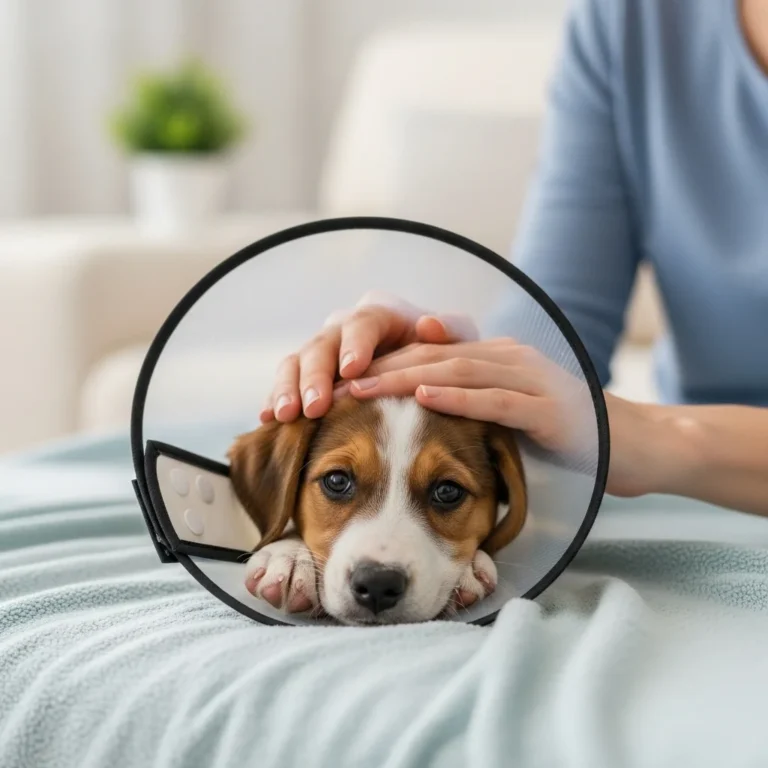
puppy strangles
Hey there, fellow dog lover! Have you ever had one of those moments where you’re just gazing at your new puppy, your heart swelling with love as they do that adorable, wobbly pounce on a toy? It’s pure magic, right? Then, in what feels like a blink of an eye, you notice something’s off. Maybe their cute little face looks puffy, or they’re not their usual zoomie-self.
That knot in your stomach? I’ve been there. It’s terrifying. And if you’ve found your way here because you’re worried about something called “puppy strangles disease,” take a deep breath. You’ve come to the right place. I’m here to walk this scary path with you, translate the vet-speak, and share everything you need to know to help your furry best friend get back to being the bouncy, happy pup they’re meant to be. Let’s dive in.
So, what is puppy strangles?
Puppy Strangles: A Guide for Concerned Pet Parents
What Exactly Is Puppy Strangles?
Okay, let’s paint a picture. Imagine your sweet, fluffy baby wakes up one morning looking like they’ve gone a few rounds with a grumpy bee. Their muzzle is all swollen, their eyelids are puffy, and you might start to see little bumps popping up. To top it all off, the glands under their jaw feel like little golf balls. That, in a not-so-fun nutshell, is what we’re talking about when we say “puppy strangles in dogs.”
I know, the name sounds absolutely dreadful—it totally conjures up images of breathing troubles. But here’s a key piece of info to ease your mind: it doesn’t actually affect their ability to breathe. Phew! Instead, think of it as a really intense, internal inflammatory party that their body is throwing, and it’s primarily crashing in their skin and lymph nodes. It leaves them feeling absolutely rotten, but understanding it is the first step to helping them.
Is “Puppy Strangles” the Same as “Juvenile Cellulitis”?
puppy cellulitis strangles: Yes, they are one and the same! It’s like the difference between me calling my dinner “puppy chow” and a chef calling it “a finely-balanced, nutrient-dense canine culinary experience.” “Juvenile cellulitis” is the fancy, official medical term that vets use. It’s super accurate because it describes the inflammation (that’s the “cellulitis” part) in young dogs (that’s the “juvenile” part).
“Puppy strangles” is just the much more common, colloquial name that got stuck because all that swelling around the face and neck can look a bit like a stranglehold. So, if your vet starts talking about juvenile cellulitis, just nod knowingly—they’re talking about the same condition.
What Causes Puppy Strangles? Is It Contagious?
This is the million-dollar question, and the honest answer is… we aren’t 100% sure. It’s not like kennel cough where we can point to a specific germ. The leading theory is that it’s an immune-mediated condition. Let me break that down in my own dog-mom way.
Sometimes, a puppy’s brand-new immune system is like an overeager puppy itself—it gets a little too excited and doesn’t know its own strength. Instead of just fighting off bad guys like bacteria and viruses, it gets confused and starts attacking the body’s own tissues. That’s what seems to happen here. It’s often compared to immune-mediated conditions in people, like lupus or rheumatoid arthritis, where the body’s defense system goes a bit haywire.
And now for the most important relief of the day: No, puppy strangles is NOT contagious. Say it with me: NOT CONTAGIOUS. You cannot catch it. Your other dog cannot catch it. Your cat is safe. It is an internal glitch within that one specific puppy’s immune system. So, you don’t need to panic about isolating your pup from the whole family, which is a huge weight off any pet parent’s shoulders.
Which Breeds Are Most Susceptible to Puppy Strangles?
While any puppy, from the tiniest Chihuahua to the biggest Great Dane, can potentially develop this, some breeds do seem to have a genetic VIP pass to this particular unpleasant party. Breeds that vets often see with puppy strangles include:
- Golden Retrievers
- Dachshunds
- Gordon Setters
- Labrador Retrievers
- Beagles
- Brittanys
Now, don’t let this list freak you out if you have one of these breeds! It just means there might be a higher genetic likelihood. It’s not a guarantee, and many, many puppies from these breeds never experience it.
What Age Do Puppies Typically Get Puppy Strangles?
The clue is totally in the name “juvenile cellulitis”! This is almost exclusively a “little kid” problem. We’re talking about the baby stage, typically between 3 weeks and 4 months of age. It’s super, super rare to see it in an older puppy or an adult dog. This tight age window really supports the idea that it’s linked to that specific phase of immune system development when things can sometimes get a little wonky.
Recognizing the Symptoms
Knowing what to look for is your superpower as a pet parent. Catching this early can make a world of difference in your pup’s comfort and recovery.
What Are the First Signs of Puppy Strangles?
Often, it starts with the face. You might do a double-take and think, “Has his face always been that puffy?” It can come on really suddenly. Along with the swollen muzzle and eyelids, keep an eye out for:
- Lethargy: Your live-wire puppy would rather snooze than play tug-of-war? Major red flag.
- Loss of Appetite: Turning down their favorite, stinkiest treat? That’s a sure sign something is up.
- Pain or Sensitivity: They might flinch or whimper if you try to pet their sweet face or under their jaw.
- Submandibular Lymph Node Swelling: Those “golf balls” under the jaw are a classic sign.
Dr. Karen Moriello, a board-certified veterinary dermatologist, always tells paw-rents to be face-sleuths: “Early detection is key,” she emphasizes, “as it allows for prompt intervention and can minimize discomfort for the puppy.”
What Do the Skin Lesions and Pustules Look Like?
As things progress, the skin changes get more distinct. We’re not talking a little puppy acne here. These lesions have a specific look:
- Papules and Pustules: You’ll see small, red bumps that often turn into proper, pus-filled pimples. They love to hang out on the muzzle, around the eyes, and on the ears.
- Crusting: When those pustules pop (yuck, I know), they form icky, thick, yellowish-brown crusts.
- Erosion and Ulceration: In bad cases, the skin can break down into open, painful sores that are a magnet for secondary bacteria.
- Hair Loss: All that inflammation can damage the hair follicles, leading to patchy hair loss.
It’s not a pretty sight, and I won’t sugarcoat it—it looks super uncomfortable for your little one.
Do Puppies with Strangles Always Have Swollen Lymph Nodes?
While not every single case has massively obvious lymph nodes, swollen lymph nodes are a super common and tell-tale sign. The ones under the jaw are almost always involved. Think of them as the command centers for the immune system; they’re working in overdrive because of all the inflammation happening next door.
Can Puppy Strangles Affect Other Parts of the Body Besides the Face?
While the face is definitely the main stage for this drama, the show can sometimes go on tour. You might see lesions pop up in other spots:
- The Neck: Especially under the chin.
- The Trunk: Less common, but it can happen.
- The Paw Pads: Swollen, tender paws that make walking painful—it just breaks your heart.
- The Genitals and Anus: This is rarer, but it’s something to be aware of.
When it spreads like this, it’s a sign of a more severe case and your pup will need extra TLC and swift vet care.
Are There Other Conditions That Look Similar to Puppy Strangles?
Oh, for sure! This is exactly why you need a veterinary detective on the case. A bunch of other issues can do a pretty good impersonation. The look-alikes include:
- Severe Allergic Reactions: Like a bee sting! This causes swelling but usually doesn’t come with the pustules and overall sick-puppy vibe.
- Bacterial Skin Infections (Pyoderma): These can cause pustules and crusting, but they usually respond to antibiotics alone.
- Demodectic Mange: Caused by mites, this can also cause hair loss and pustules, but it’s often super itchy and a simple skin scrape can spot the culprits.
- Ringworm: A fungal infection that causes crusty, hairless patches, but it usually doesn’t bring the dramatic swelling.
- Abscesses: A localized pocket of infection that causes a painful lump.
See? It’s a tricky one! So, let your vet play detective to get the right diagnosis.
Diagnosis and Treatment
This is where we roll up our sleeves and get your pup on the road to recovery. Fast action is everything.
How Is Puppy Strangles Diagnosed by a Veterinarian?
Your vet will start by playing 20 questions with you and giving your pup a super thorough nose-to-tail exam. But to be sure and rule out the look-alikes, they’ll likely want to run some tests:
- Skin Scrapes: To check for pesky mites.
- Fungal Culture: To rule out ringworm.
- Bacterial Culture and Sensitivity: Even though strangles isn’t bacterial, those open sores often get infected. This test finds the right antibiotic to fight them.
- Cytology of Pustules: They’ll take a sample from a pustule and look under the microscope. With strangles, they often see a lot of inflammation without a primary bacterial cause.
- Biopsy and Histopathology: This is the gold standard, especially in tricky cases. A tiny piece of skin is sent to a pathologist. Dr. William Miller, a veterinary dermatology guru, confirms its value: “While a presumptive diagnosis can often be made based on clinical signs, a biopsy provides confirmation and helps guide treatment, especially in challenging cases.”
What Is the Standard Treatment Protocol for Puppy Strangles?
Here’s the great news: this is a treatable condition! But the treatment needs to be prompt and powerful. It’s a two-pronged attack.
Are Antibiotics Always Necessary for Puppy Strangles?
Pretty much, yes. Remember how I said those open sores are a magnet for bacteria? Secondary bacterial infections are super common and can make a bad situation much, much worse. So, even though strangles itself isn’t bacterial, broad-spectrum antibiotics are used to knock out these party-crashing germs. You MUST finish the entire course, even if your pup seems all better!
What Role Do Corticosteroids Play in Treatment?
This is the real MVP of treatment. Since the problem is an overzealous immune system, corticosteroids (like prednisone) are used to calm that overreaction down. They’re like the stern teacher telling the immune system to settle down. They work wonders—reducing swelling, easing pain, and helping the skin heal fast. Your vet will start with a higher dose and then slowly wean them off. Never, ever stop this medication suddenly; you have to follow the tapering schedule to a T. Dr. Christine Rees puts it perfectly: “Corticosteroids are the mainstay of therapy for juvenile cellulitis, effectively quieting the overactive immune system responsible for the clinical signs.”
Are There Any Topical Treatments That Can Help?
While the oral meds do the heavy lifting, topical stuff can be amazing for support and comfort:
- Antiseptic Washes or Shampoos: Chlorhexidine is a great ingredient to help keep the skin clean and reduce bacteria.
- Warm Compresses: A soft, warm washcloth held gently on crusty areas can soften them up and feel really good.
- Soothing Ointments or Sprays: Your vet might recommend something specific to help the skin heal.
- The Cone of Shame (E-collar): I know, it’s sad. But it’s a non-negotiable hero! It stops your pup from scratching and making everything worse.
How Long Does It Take for a Puppy to Recover from Strangles?
With the right meds, you’ll often see a turnaround within a few days to a week. The swelling goes down, the energy comes back, and they start acting like a puppy again. It’s the best feeling!
But for a full recovery—where the skin is totally healed and hair has grown back—you’re looking at several weeks to a couple of months. Patience is key! You have to keep up with all the meds for the entire time, even after they seem 100% back to normal, to prevent a relapse.
Prognosis and Long-Term Effects
Let’s talk about the light at the end of the tunnel. What does life look like after puppy strangles?
What Is the Prognosis for Puppies Diagnosed with Strangles?
I am so happy to tell you that the prognosis is generally excellent! Like, really, really good. The vast majority of puppies make a full recovery and live completely normal, goofy, happy dog lives.
The key, and I can’t stress this enough, is prompt and aggressive treatment. If it’s left untreated, things can get very serious, leading to widespread infection and systemic illness. This is why rushing to the vet at the first sign is so critical.
Can Puppy Strangles Cause Permanent Scarring or Hair Loss?
This is the tough part. Unfortunately, sometimes yes. The severe inflammation can sometimes leave a mark:
- Permanent Scarring: In areas where there were deep ulcers, the skin might heal but be a bit thicker or discolored.
- Permanent Hair Loss (Alopecia): If the hair follicles were badly damaged, the hair might not grow back in some spots, especially on the muzzle or ears.
It’s cosmetic, and it in no way affects their ability to be a wonderful, loving companion. They’re just a little extra unique!
Are There Any Long-Term Health Issues Associated with Puppy Strangles?
Once they’ve recovered, it’s usually smooth sailing! There are no major long-term health issues directly tied to the condition.
A couple of footnotes:
- Immune System: Some vets wonder if these pups might be slightly more prone to other immune issues later, but it’s not a strong link.
- Breeding: Because of the suspected genetic link, it’s often recommended that dogs who had puppy strangles are not used for breeding.
Can a Puppy Get Strangles More Than Once?
It’s incredibly rare. This condition is firmly a “puppyhood” thing. Once they mature past that 4-5 month window, their immune system seems to figure things out and it almost never comes back. If an adult dog has similar symptoms, it’s definitely something else.
Home Care and Prevention
You’re the chief comfort officer and nurse during this time! Here’s how you can help at home.
How Can I Care for a Puppy with Strangles at Home?
Your job is to be the steady, loving rock for your pup.
- Medication Ninja: Be religious about the meds. Set alarms, use pill pockets, do whatever it takes to get every dose in on time.
- Gentle Cleaner: Keep those lesions clean with warm water or a vet-approved solution. Be soft and gentle—it’s tender.
- Cone Enforcer: I know it’s hard, but the cone is your best friend. It prevents so much more damage.
- Comfort Creator: Provide soft, clean bedding and a quiet place to rest.
- Vigilant Observer: Keep a close watch for any changes, good or bad.
What Should I Feed a Puppy Undergoing Treatment for Strangles?
When they feel yucky, they might not want to eat.
- Make it Tempting: Try canned food, boiled chicken and rice, or anything super palatable.
- Hydration is Key: Always have fresh water available. Low-sodium broth can help encourage drinking.
- Little and Often: Small, frequent meals are easier on a upset tummy.
- Call the Vet: If they’re not eating or drinking at all, it’s time to check in with your vet.
Are There Any Ways to Prevent Puppy Strangles?
Since we don’t know the exact cause, there’s no surefire way to prevent it. But supporting overall health is always a win:
- Good Breeding: Responsible breeders are aware of predispositions.
- Top-Notch Nutrition: Feed a high-quality puppy food for a strong immune system.
- Low-Stress Life: A happy, calm home helps everything.
- Early Intervention: This is the big one! Knowing the signs and acting fast is the ultimate form of prevention when it comes to minimizing its impact.
When Should I Seek Veterinary Attention for a Puppy with Suspected Strangles?
Right now. Immediately. Don’t wait.
If you see the signs—sudden facial swelling, lethargy, pustules—this is a veterinary emergency. The faster you act, the better and easier the recovery will be for your precious pup.
So, to wrap up our heart-to-heart, puppy strangles is a scary-sounding but very treatable bump in the road. It requires a quick response, a trusted vet, and a whole lot of love. You’ve got this. By being an informed and proactive pet parent, you can guide your furry friend through this and back to a life full of wagging tails and wet-nosed kisses.
please leave comment
you may like it





sources
https://vcahospitals.com/know-your-pet/juvenile-cellulitis-puppy-strangles
https://www.akc.org/expert-advice/health/puppy-strangles
https://www.petmd.com/dog/conditions/skin/c_dg_puppy_strangles
https://www.veterinary-practice.com/article/canine-juvenile-cellulitis-juvenile-pyoderma-puppy-strangles
https://pmc.ncbi.nlm.nih.gov/articles/PMC8842239
https://www.cliniciansbrief.com/article/puppy-strangles-juvenile-cellulitis-pyoderma
https://www.vets-now.com/pet-care-advice/juvenile-cellulitis-in-puppies
https://vetster.com/en/conditions/dog/puppy-strangles
https://www.mspca.org/angell_services/understanding-puppy-strangles-what-every-pet-owner-needs-to-know

